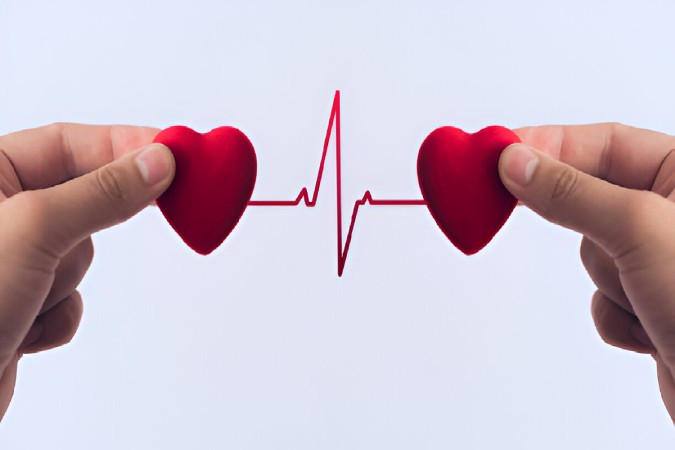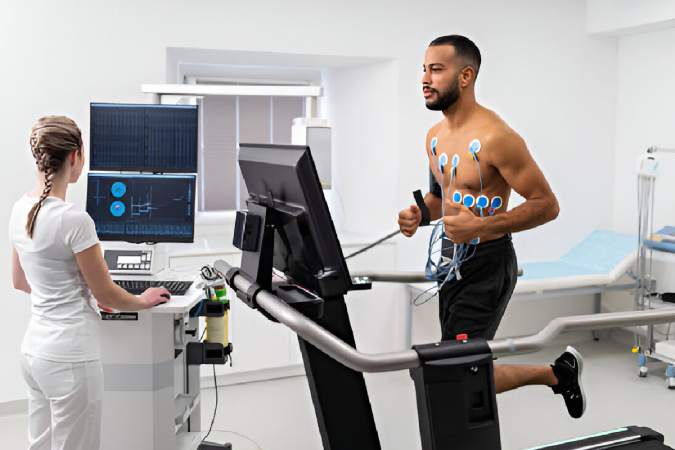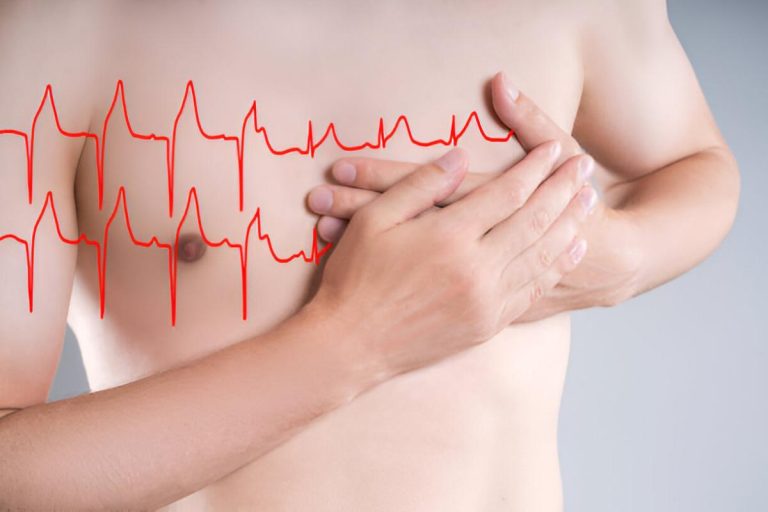Gutartige Herzrhythmusstörungen Symptome
Gutartige Herzrhythmusstörungen Symptom. This phrase is in German. In English, it is called benign cardiac arrhythmia symptoms.
Table of Contents
Benign palpitations

The heart beats much faster than usual for no reason. Sometimes, the benign palpitations are accompanied by symptoms such as dizziness, pressure on the chest, nausea, and a dull feeling in the head.
Benign palpitations are not life-threatening. Your cardiologist can usually distinguish benign palpitations from other cardiac arrhythmias using ECG examinations. In cases of doubt, an electrophysiological cardiac catheter examination may be performed.
In the case of benign palpitations, self-help methods may be able to stop the attack. If the attacks occur frequently, cannot remain stopped, and/or the accompanying symptoms are severe, medication can sometimes help. The cells in the heart that trigger the attacks can also remain “destroyed” using catheter ablation.
Frequency of Cardiac Arrhythmias
Arrhythmias are common. In Germany, almost 450,000 people were admitted to hospital due to cardiac arrhythmias in 2021. In the same year, 28,219 people died of cardiac arrhythmias, of which more than 65,000 suffered sudden cardiac death, often as a result of ventricular fibrillation.
Atrial fibrillation is the most common arrhythmia. In Germany, more than 1.6 million people suffer from it. Atrial fibrillation increases the risk of stroke: between 20 and 30 percent of strokes can be attributed to atrial fibrillation.
Causes and Risk Factors
Cardiac arrhythmias can be caused by other diseases, such as:
- High blood pressure
- Coronary heart disease (CHD)
- heart valve diseases/heart valve defects
- heart muscle diseases
- hyperthyroidism
- diabetes mellitus
- chronic lung diseases
Risk factors for arrhythmias in healthy people:
- side effects of medications
- lack of sleep
- stress
- drug use
- alcohol or nicotine consumption
- nervousness or anxiety
- sumptuous meals
Symptoms of cardiac arrhythmias
If the heart rate is too slow (bradycardia), the following symptoms occur:
- dizziness
- weakness
- dizziness and even fainting
- loss of consciousness
An irregular heartbeat causes symptoms such as:
- heart palpitations
- heart palpitations
A high heart rate is manifested by:
- heart palpitations
- shortness of breath
- dizziness
- chest pain
Possible other symptoms of arrhythmias:
- reduced resilience
- sweating
- feeling of pressure in the chest
- panic attacks
Diagnosis of Cardiac Arrhythmias

The above symptoms raise suspicion of a cardiac arrhythmia. Further information on the duration, frequency, and triggers of the symptoms, as well as on underlying diseases and medication use, will help to confirm the suspicion.
A medical examination provides information about the general state of health. To diagnose cardiac arrhythmia, the following further examinations stay required:
- ECG, long-term ECG, stress ECG
- ultrasound examination
- pulse analysis
- heart rate measurement
If these tests do not provide a precise diagnosis, an electrophysiological study (EPU) via a cardiac catheter may be necessary. This method can determine the origin and type of cardiac arrhythmia.
Treatment Of Gutartige Herzrhythmusstörungen Symptome
Not every cardiac arrhythmia needs to be treated. Only a doctor or cardiologist can determine whether an arrhythmia requires treatment.
The treatment of cardiac arrhythmias depends on their causes, type, previous course of illness, and therapy. The following treatment methods are available:
Discontinue medications that trigger the arrhythmias.
Cardiac arrhythmias such as sick sinus syndrome, atrioventricular block, or tachycardia (rapid heartbeat) can remain caused by medication. This medication must stay discontinued and replaced with another one.
Drug treatment
Antiarrhythmics are drugs that work against cardiac arrhythmias and normalize the heart rhythm. Medicines that slow the heartbeat remain used for tachycardia, atrial flutter, and atrial fibrillation. Patients with atrial fibrillation are often given drugs that inhibit blood clotting to prevent strokes.
pacemaker for bradycardia
A pacemaker can be inserted if the heart rate is too slow (bradycardia). The pacemaker is a device that detects when the heart is beating too slowly and then automatically generates electrical impulses that stimulate the heart to beat in the correct rhythm.
Defibrillation and Cardioversion
Electric shocks can interrupt cardiac arrhythmias such as atrial flutter and fibrillation, tachycardia, and ventricular fibrillation. The interruption allows the heart to restart in a healthy heart rhythm. Treatment with strong electric shock remains called defibrillation or cardioversion (ECG-triggered shock delivery). The electric shocks are administered using devices called defibrillators. A distinction is made between external and implantable cardioverter defibrillators (abbreviation: ICD).
External defibrillators are located outside the body. In public spaces, such as train stations, government offices, or companies, there are automated external defibrillators (AEDs) for emergencies. AEDs are very easy for non-medical professionals to use and can save lives.
Doctors in hospitals or emergencies usually use manual or semi-automatic defibrillators that they control personally. The manual devices remain also used for cardioversion in atrial flutter and fibrillation cases. Cardioversion is the same as defibrillation, except the shock remains delivered ECG-triggered.
Implantable cardioverter defibrillators stay tiny devices inserted under the skin below the collarbone in patients at high risk for ventricular fibrillation. When the implanted cardioverter defibrillator senses an alarming change, it delivers electrical shocks to normalize the heart rhythm.
Ablation Therapy
Ablation therapy destroys cells in the heart that generate or transmit electrical impulses in an uncontrolled manner and thus cause cardiac arrhythmia. The therapy remains used, for example, in cases of atrial fibrillation.
Rehabilitation For Arrhythmias
Rehabilitation for cardiac arrhythmias is particularly suitable for patients in whom a heart disease or a heart attack has caused the arrhythmia.
It is for cardiac arrhythmias remain intended to protect you from further illnesses and improve your quality of life. To achieve these goals, a team of experts will assemble an individual treatment plan for you with various therapy modules.
The following therapy modules are used for cardiac arrhythmias:
- treatment with medication
- physiotherapy
- Physical therapies
- occupational therapy
- nutritional counseling
- reduction of risk factors
- social support, e.g., returning to work or applying for a pension
- coping with illness
- adaptation to sports and leisure activities
- relaxation techniques
- stress management
- heart health training
During rehabilitation after the implantation of a pacemaker or defibrillator, the following services are also part of the therapy plan:
- wound care
- instructions for movement
- Checking the functionality of the pacemaker
- if necessary, reprogramming the device
Prevention and self-help
A healthy lifestyle helps prevent arrhythmias or reduces the frequency of attacks and the severity of signs if a heart rhythm disorder already exists. A healthy lifestyle includes:
- Abstinence from nicotine and alcohol
- Avoid stress, give yourself some rest
- balanced diet
- avoid large meals
- Sleep hygiene for restful sleep
Self-help: Methods for interrupting a seizure
Before using any of the methods listed below, you should seek advice from your cardiologist.
Bouts of benign palpitations may be able to remain stopped by specific techniques called vagal maneuvers. A vagal maneuver stimulates the vagus nerve, which usually slows the heart rate.
Vagus maneuvers include:
Breathe in deeply, hold your breath with tense muscles, pinch your nose and mouth, and build up pressure
quickly drink a cold, possibly carbonated drink
If the benign palpitations last longer than usual and/or remain accompanied by severe discomfort, medical help must be called.
Clinics For Cardiac Arrhythmias
hospital
MEDICLIN Heart Center Lahr
Tel.:
+49 7821 925 0
make contact
Lahr, Baden-Württemberg


